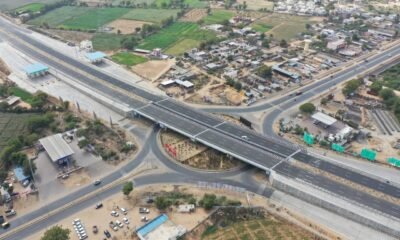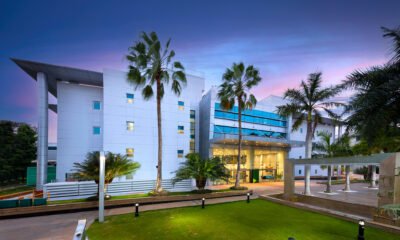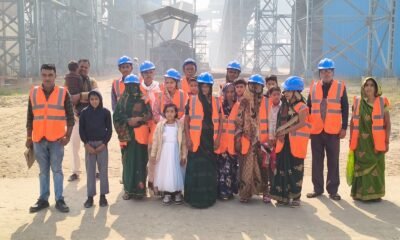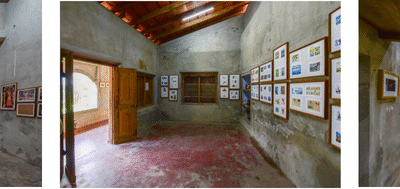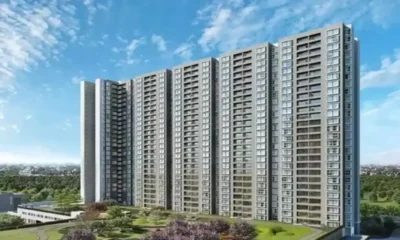Guest Column
Luxury Real Estate is Creating Positive Value for Cities

Mrinaal Mittal, Director, Homeland Group
By Mrinaal Mittal
Luxury real estate has evolved far beyond the idea of extravagance; it now plays a defining role in shaping the modern city. In Indian metro cities, the growth of premium housing has acted as a catalyst for broader urban transformation. Every marquee development sets new benchmarks in design, infrastructure, and liveability, often prompting surrounding areas to upgrade in tandem. These projects not only attract discerning buyers but also bring in global attention, capital, and talent, strengthening the city’s overall economic fabric.
According to the latest ANAROCK data, India’s housing market is entering a new phase — one defined more by value than volume. While overall sales across the top seven cities have begun to stabilise, the total value of homes sold continues to surge, reflecting the premiumisation of demand. In FY 2025, around 4.22 lakh homes were sold nationwide, accounting for a cumulative sales value of approximately INR 5.59 lakh crore. Despite a 14 per cent year-on-year dip in volumes, total value still grew by 6 per cent, reaching the highest level since FY 2022. The momentum is clearly being driven by a strong appetite for high-ticket homes in the luxury and ultra-luxury segments, even as affordability challenges weigh on the mid-income market.
Moreover, the picture varies across the cities. Among major markets, NCR and Chennai have emerged as frontrunners, each achieving nearly three-fourths of their previous year’s total sales value by mid-year. NCR alone recorded sales of over 29,000 units worth nearly INR 76,000 crore in H1 FY26, underscoring the region’s growing dominance in the premium housing category. Chennai, too, has shown remarkable traction, crossing INR 12,000 crore in value during the same period.
Meanwhile, the Mumbai Metropolitan Region, India’s largest housing market, is witnessing a more measured trajectory. Over 61,000 units were sold in H1 FY26, though the total value achieved so far remains just under half of FY25’s tally. Cities like Bengaluru, Pune, Hyderabad, and Kolkata are showing a similar pattern: moderated volumes, but a clear tilt toward higher-value transactions. Across metros, developers are aligning their launches with this evolving demand cycle, focusing on luxury and ultra-luxury offerings that deliver stronger value realisation and align with India’s upwardly mobile aspirations.
This shift toward premium and high-value housing is also generating a ripple effect across the urban economy. Each luxury project contributes far more than architectural distinction; it drives employment across construction, design, and allied services while catalysing growth in retail, hospitality, and entertainment ecosystems that emerge around these premium clusters. As these developments mature, they tend to attract NRI investments and institutional capital, reinforcing the city’s reputation as a stable and aspirational real estate destination. In essence, the luxury housing boom is shaping the economic fabric of the city itself.
Besides, the impact of luxury development is equally visible in the way it reshapes city infrastructure and urban landscapes. Premium corridors across NCR, particularly along the Dwarka Expressway and Noida Expressway, have become catalysts for large-scale regeneration, transforming once underdeveloped stretches into well-connected, high-value urban zones. These projects often bring with them integrated ecosystems comprising retail boulevards, schools, healthcare, and leisure spaces, setting new standards for liveability and urban design. What begins as a premium residential hub soon evolves into a self-sustained community, driving civic improvements that benefit the larger population. Similar transformations can be seen in Bengaluru’s Whitefield or Hyderabad’s Financial District, where luxury-led growth has elevated the entire city’s urban experience.
Beyond the tangible benefits, luxury real estate also plays a defining role in shaping how cities are perceived on the global stage. Premium developments reflect a city’s confidence. Its ability to offers world-class infrastructure, design, and lifestyle experiences that resonate with international standards. For instance, Gurgaon’s evolving skyline, lined with iconic addresses and mixed-use landmarks, mirrors the sophistication of global business districts. This evolution not only enhances investor sentiment but also strengthens the city’s positioning as a destination for global capital, talent, and enterprise, signalling that India’s urban centres are ready to compete with the best in the world.
This evolving idea of responsible luxury marks a significant shift in how developers view their role in city-building. Developers are also investing in community initiatives, from sustainability drives to cultural programming, that enrich neighbourhood life beyond their project boundaries. In doing so, luxury real estate is gradually transforming into a catalyst for inclusive and conscious urban growth, where aspiration meets accountability.
Therefore, as India’s metros increasingly compete on a global scale, luxury housing has emerged as both a marker of progress and a catalyst for sustained growth. The true dividend of this evolution lies not merely in rising property values, but in the creation of cities that are more efficient, inclusive, and globally aspirational — places where quality of life becomes the new measure of success.
The author is Director of the Homeland Group

 News2 weeks ago
News2 weeks agoInfrastructure Automation Company Enlite Launches World’s First Patented Edge Controller for Intelligent Infrastructure

 News1 day ago
News1 day agoTWH Hospitality Announces Aggressive F&B Expansion Plan with ₹30 Cr Investment

 News2 weeks ago
News2 weeks agoIshara Art Foundation to Present Group Exhibition ‘Amphibian Aesthetics’ at Ishara House in Kochi

 News2 weeks ago
News2 weeks agoGodrej Properties Crosses FY26 Annual Business Development Guidance with Acquisition of 75-acre land parcel in Nagpur

 News3 weeks ago
News3 weeks agoMumbai Returns to Pre-Pandemic Investment Levels, Surpasses $1 Billion 4th Consecutive Year: Cushman & Wakefield

 News3 weeks ago
News3 weeks agoGurugram Premium Segment Drives Projected Rs 6.65 Lakh Crore Market: ANAROCK

 News2 weeks ago
News2 weeks agoReal Estate Investment Momentum in APAC, India to Hold Steady Through 2026: Colliers’ Survey Insights

 News2 weeks ago
News2 weeks agoK2 Infragen Delivers Robust H1 with 76.5% Revenue Growth, 70% Profit Jump


